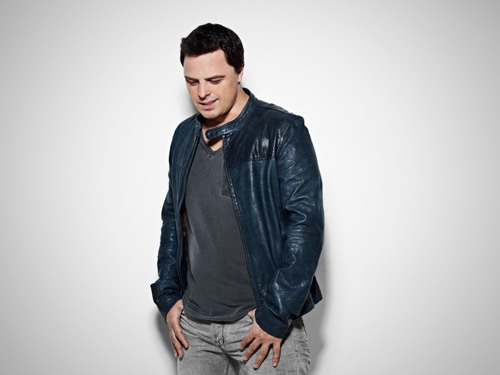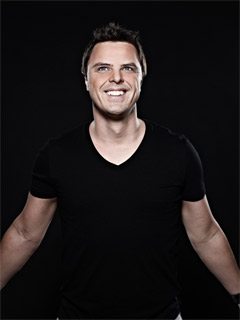Your Cart
Your cart is empty
There are no items in your cart
Keep shopping

Included Software:

Founder of the dance label Coldharbour Recordings, Markus Schulz has been tearing up the trance scene for years, and is always open to sharing advice with fellow DJs. When we caught up with him, we asked him how he structures the perfect club set.
When you show up at a nightclub, what elements make it enjoyable and fun to play?
Markus: The first thing is that the vibe is right. What I mean by the vibe is that the opening DJ is setting up the room properly. The sound has to be great. People should be in a party mood, but the cork should not be popped just yet. When the headliner comes on, they want to make a good impression on the audience. I enjoy events where everybody on your team wants to make it a special night. The opening DJ has to be on-board, and if there’s a closing DJ, they should understand how to play after the headliner. Those nights turn out to be amazing.
How should an opening DJ play?
Markus: You can visualize it by looking at a graphic equalizer. The bass is on the left, and the highs are on the right. I like opening DJs who play from the center to the left part of the spectrum, focusing mostly on the beats and the bass. I want the low-end to be grooving, but I want them to avoid playing anything with a lot of hi-hats and white noise. Even if you play a slow track at 125 BPM, if it has a lot of white noise and big riffs, it fatigues people’s ear drums. I like to play for ten hours and longer at a party, and if you burn people’s eardrums too early, they might leave before you want them to. You want to save the high frequencies until the right time.
Should the opening DJ play music at a low volume?
Markus: I don’t believe that. The opening DJ can play loud. The volume isn’t the issue. For me, hi-hat frequencies determine the amount of fatigue caused by the music. Even at low volume, those hi-hats can get tiresome after a while.
Is there a substantial difference between playing on the radio and playing in clubs?
Markus: When I play on my radio show, I am more open to letting tracks breathe. When people are listening to the radio, you have them captivated, and you can play tracks that sound good in the headphones and have different layers. When you play in a club, you have to get to the point, and the melodies and riffs have to be more upfront.
It used to be that you could play 10-minute tracks in clubs. On the radio, you’d play the four-minute long versions. But it seems like things have reversed; now you have a more patient audience on the radio, and a shorter attention span in the clubs. I find that during a club performance, you play 4-5 minutes of each song and move on to the next one.
Playing at a festival, your performance is even more condensed. If there are five different stages and 25 different DJs, people would get bored and go to another stage if you played a song for ten minutes.
Most music productions are still 6-8 minutes long these days. Which parts do you choose to play when you have to condense the music to make it shorter?
Markus: I’ll play the main riff and the “big” parts of the song.
Let’s talk about the “art of the opening.” Let’s say you have a great opening DJ who’s warming up the room and you’re about to start playing in 20 minutes. What should he do at the end of his set?
Markus: I recommend playing percussive music–no vocals, no big riffs. Just start getting more percussive. You’re setting a groove. People are starting to find their spots for the headlining DJ to come on.
Sometimes it happens that the opening DJ will do a great job, but then he starts playing anthems right before the headliner to get the crowd hyped up. This is actually not what you want to do. When the headlining DJ comes on, and the cork is popped, it’s supposed to be a big dramatic entrance for them. To set that up, try to build anticipation with good grooves.
But I have to tell you something. Out of hundreds of thousands of DJs out there, the smallest percentage know how to properly open up for a headliner. As a headlining DJ, when we find someone who does it RIGHT, we request them every time. I think some people don’t realize how many headlining DJs are always looking for the ultimate opening DJ. If we find one, we hang onto them. We even take them on the road with us.
It’s interesting that there is a “closing DJ” as well–the person who plays after the headliner leaves. What is their job exactly?
Markus: I think they have a difficult job. If the headliner is famous, people may want to leave after they get off. My advice for the closing DJ is to play a lot of classics. I always say, start with a classic track after the headliner has left. Journey to a genre where the headliner didn’t go.
When I play my longer sets, I program my music as three different DJs in my head. In my opening set, I play progressive. In my peak-hour set, I play the typical Markus Schulz set. In the after-hours, I play more twisted music mixed with classics. If you play safe and commercial after the headliner, you’re not going to stand out. But people will stay if there’s something special and significant that they haven’t heard that same night already.
How would you transition from a headliner set to a closing set?
Markus: I would mix out of the headlining DJ’s track if he allows you to, and mix into your own music to get into a more groovy vibe. The problem is, an abrupt change in tempo could lose the energy of the crowd, so a continuous mix is actually better for the club and you.

You travel constantly for your gigs, and it’s quite different from playing in your home town. What do you usually carry with you when you travel?
Markus: You have to get used to packing light. I do not check in any luggage, so everything I take on the road with me is carry-on only. It’s simple: take some pants for travel, two or three for the shows and get your clothes laundered at the hotel during the tour. Every hotel has laundry service. You shouldn’t check your luggage if you travel a lot. It will always get lost somewhere, and you won’t get it back until the end of your tour because it will always be one or two days behind you.
I also suggest keeping your DJ set foolproof. You should be flexible–you don’t always know what gear the club will have, and you should be able to roll with whatever happens. Play on the gear, and move onto the next show without getting frustrated over the technicalities. Obviously, your contract rider should spell out what you need, but keep your needs as simple as possible so there is less room for error.
One thing I always say is that it’s easy to prepare for a few weeks, drive down to your local club, and throw down an amazing set. But traveling, showing up jet-lagged and not knowing if it’s day or night, and playing an amazing set for people who paid to see you is a lot more challenging. It’s always nice to not worry about the gear. You’re there to make the party happen, and you can do it easier if your DJ equipment requirements are simple.
I am sure you carry around backups of your music too.
Markus: Right. I’m playing from a hard drive now, and I make sure that all CDJs are linked together. I also carry some SD cards that have at least the last month of music backed up on them. One time when I was in Turkey, I got to the gig and when I was just about to start, I realized that I left the main USB stick in my hotel room. I only had a backup with me. I had to play, but I sent someone to my hotel room. For the first 30 minutes, I played off my backup until they came back with my main music collection. I couldn’t imagine if I didn’t have a backup what would have happened.
It would have been an oldies night…
Markus: I didn’t even have that. Always have a backup. The show must go on!
We’ve seen your Winter Music Conference panels in Miami where you’ve shared advice with people. During your career, you’ve always helped DJs learn more about what you know. Since social media is such an important part of marketing for DJs lately, what’s your approach?
Markus: I think that with social media, fans want to know who you are when you’re not on the decks. If they really love your music and your sets, they want to know more about you. Social media helps you stay connected with fans on a more personal level. I notice that different types of posts generate different kinds of feedback. You could produce a new track and say “Hey, this is my new track,” but when you put up a more personal item like “I’m working here in the studio, here’s a photo,” it seems to connect better with fans because they can see the process. When you post a picture of yourself in a studio, it gives your fans a look at what it was like. I think the theatre of the mind is still a very powerful thing.
What is a good way to get local gigs?
Markus: The biggest thing is experience. I started by playing at the smallest clubs inside hotels. It helped me read the crowd and set up the mood for the night. I think young DJs need to find some gigs and residencies at small places just to start establishing a feeling for what it’s like to DJ from beginning to end.
There are two types of DJs. One is the guy who had a hit record and goes on tour as a result. Most of the time these guys will play one or two-hour sets, and that’s it. They have to learn how to DJ in order to perform because they have a hit record.
The other type is a DJ who came up from the art of DJing. That’s one of the biggest things I want people to understand, that there is an art to DJing. As this music blows up and becomes even more mainstream, learning the art of DJing through small residencies and small clubs will put you further ahead when you break. When you finally make it, you will have more experience, and it will come through in your DJ sets if you learn the art now.
What about a situation where a DJ lives in a city that doesn’t have a strong community supporting his favorite music genre? For example, let’s say that someone lives in Kansas City. Does it make sense to play commercial music just for experience?
Markus: Well, it doesn’t have to be a club. It can be a coffee shop or a restaurant. You can play anywhere to learn how to set the mood.
What if you don’t want to sell out and play too commercial?
Markus: It’s true that a restaurant may not want to hear Swedish House Mafia or my tracks during dinner, but you can still find a way to DJ. It’s absolutely possible. When I started, I was playing in places that wanted Top 40 music. My passion was for more underground music, but I learned how to program and how to read the crowds in those Top 40 places. When I started playing underground places, that knowledge was invaluable.
I remember the club would close at 2 o’clock. I would go home, power on my turntables and spin for another two hours for myself, like I was playing at an afterparty. That way, when I was invited to play afterparties, I was already in the groove because I’ve learned how to do it at home. When I first started, I would stumble after half an hour or 45 minutes. The next night, I’d go to the club, come home and do the same thing. Eventually, I mastered the sound I was trying to achieve. It helped me learn and it made a huge difference.
Next: Learn How To DJ in Nightclubs